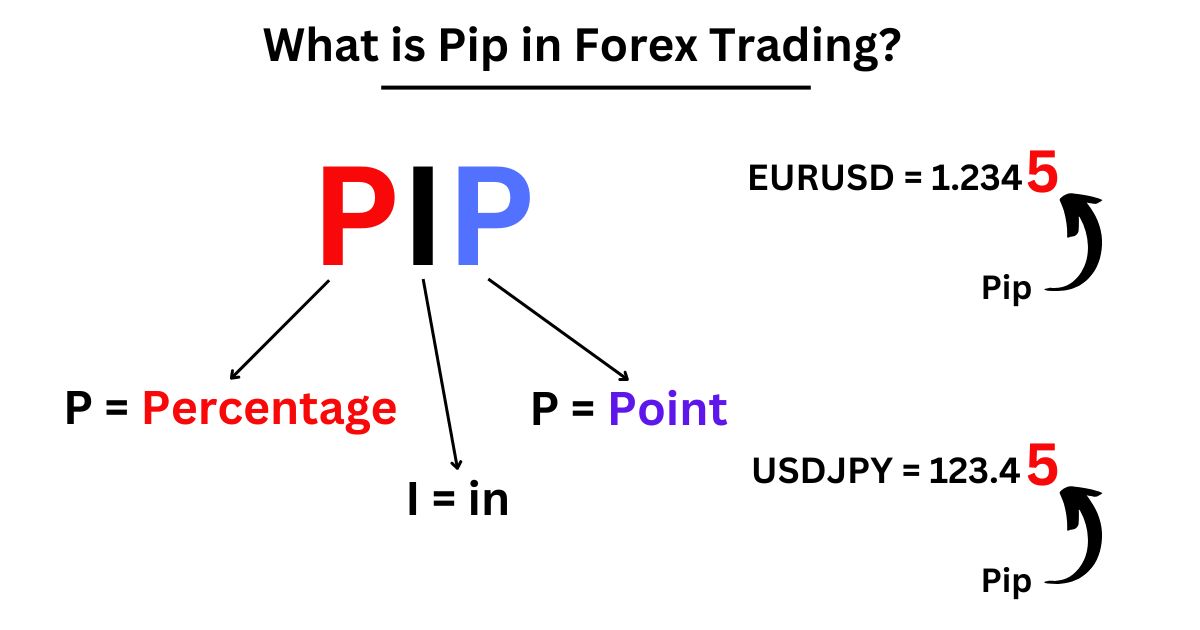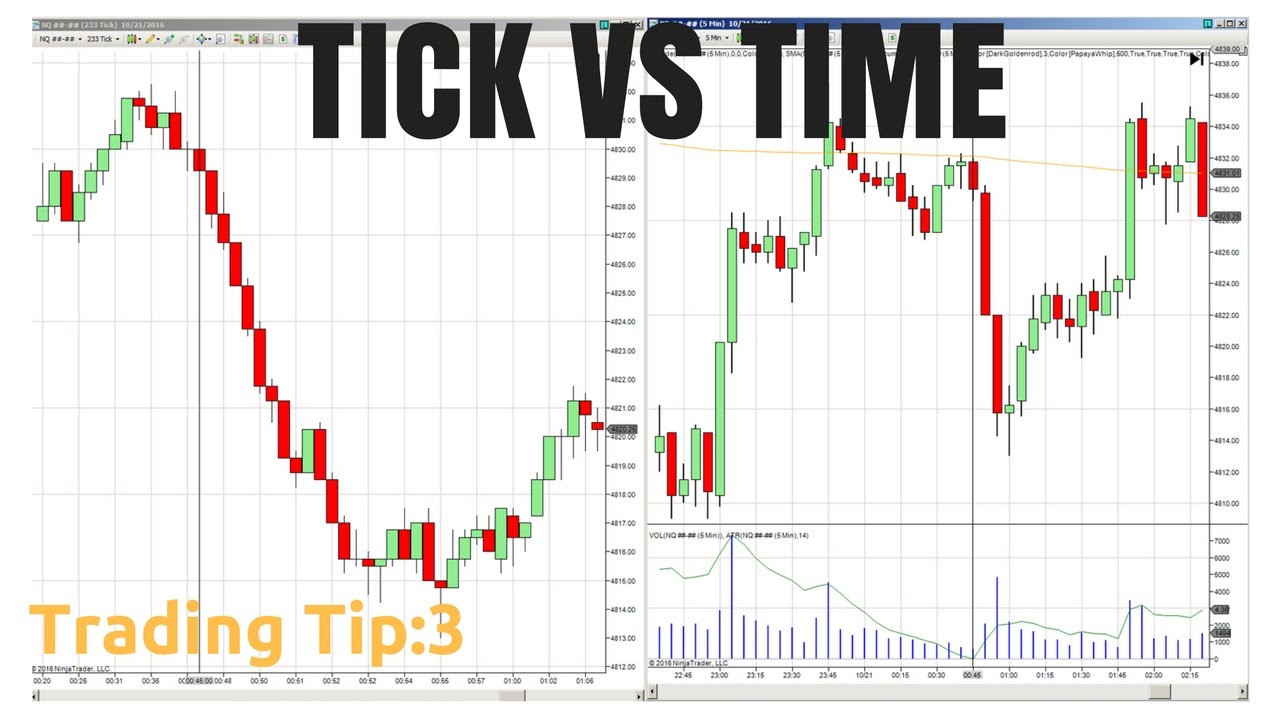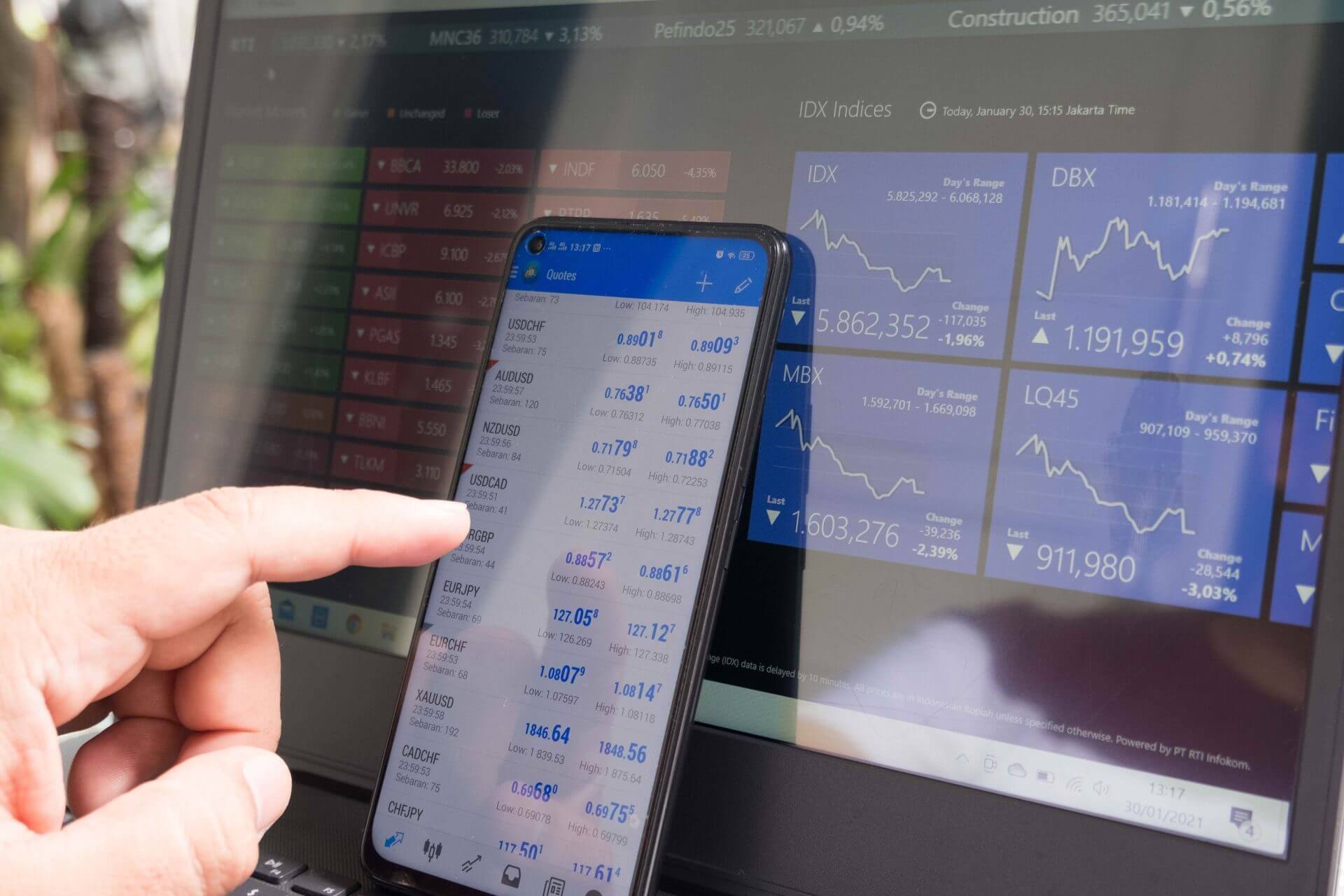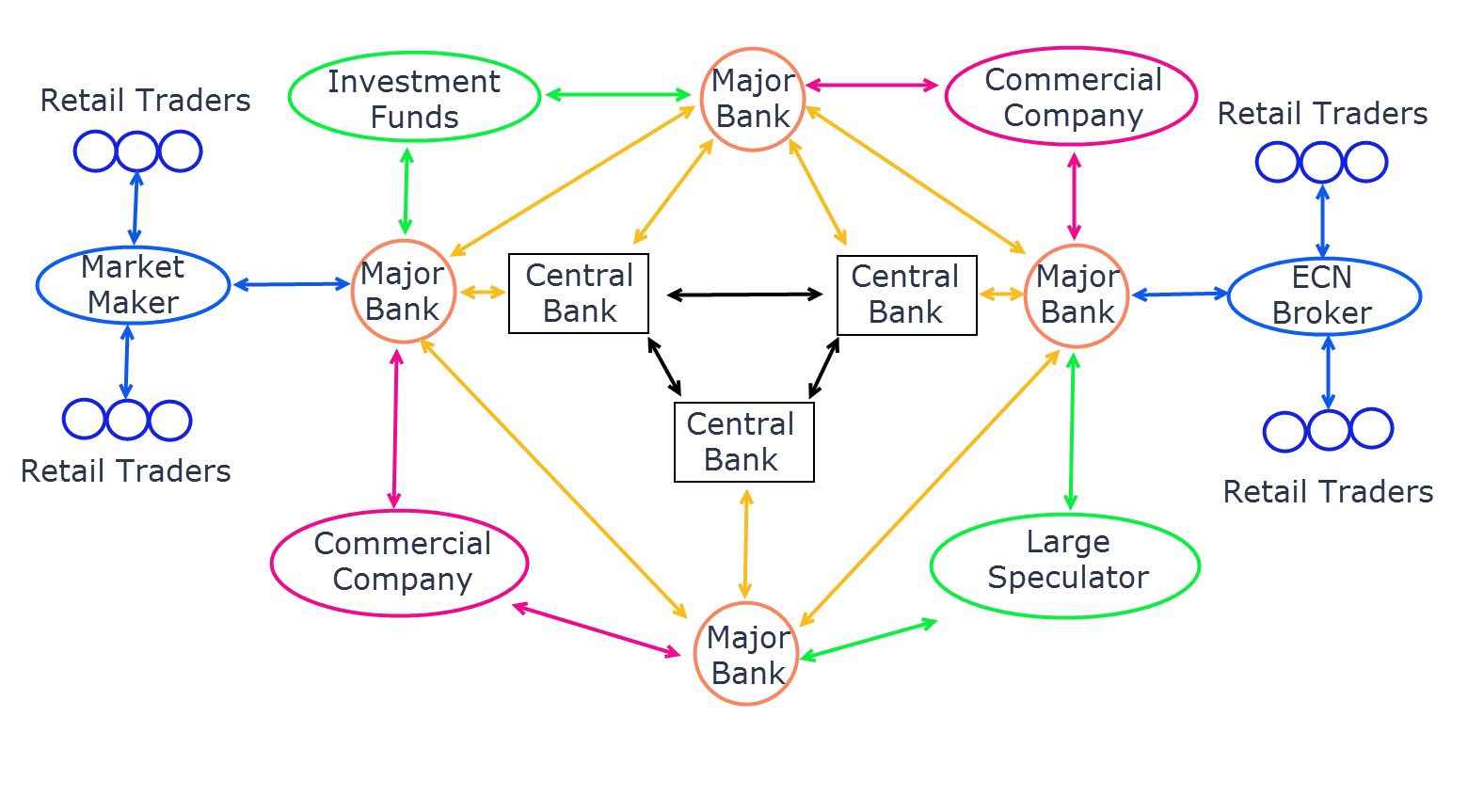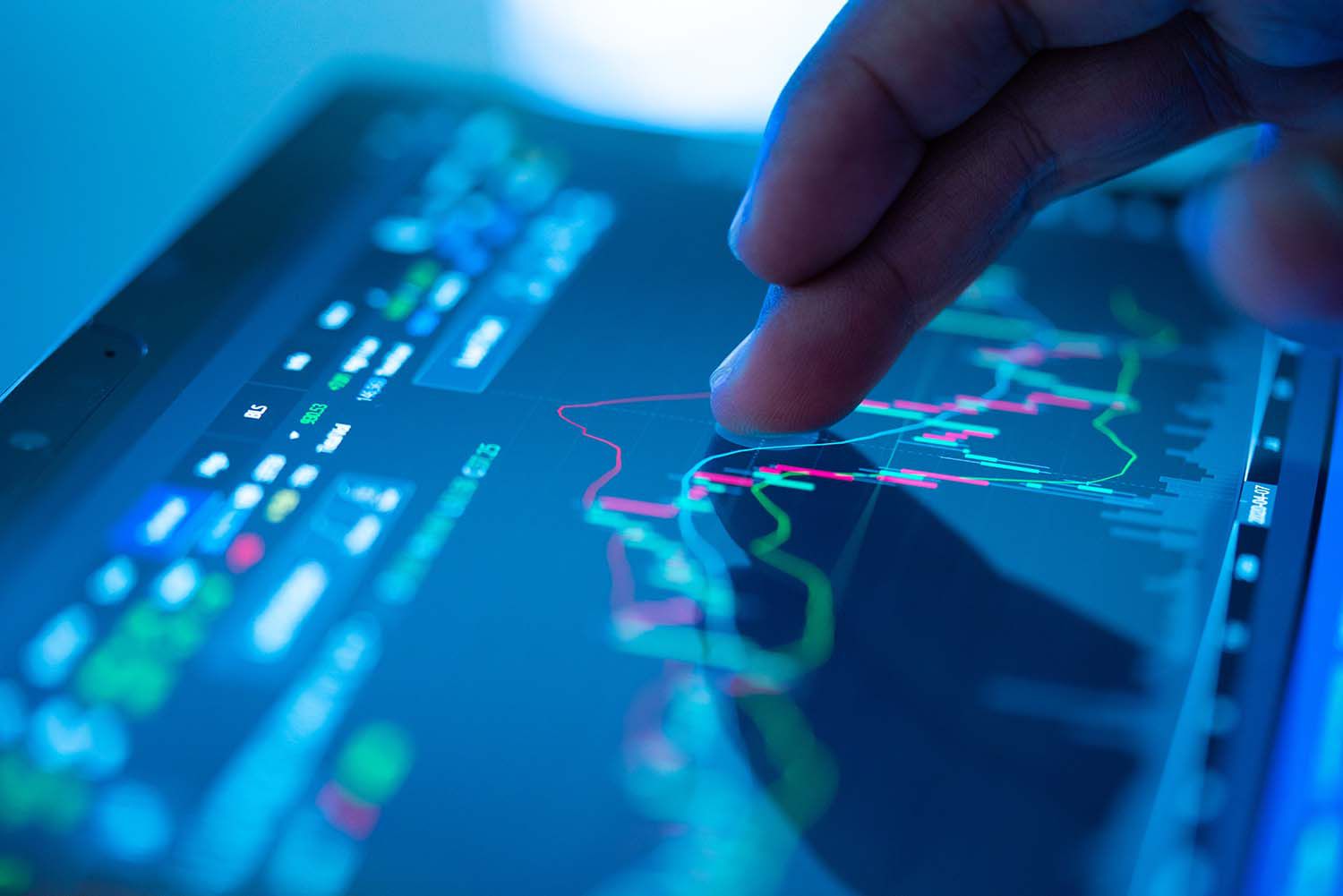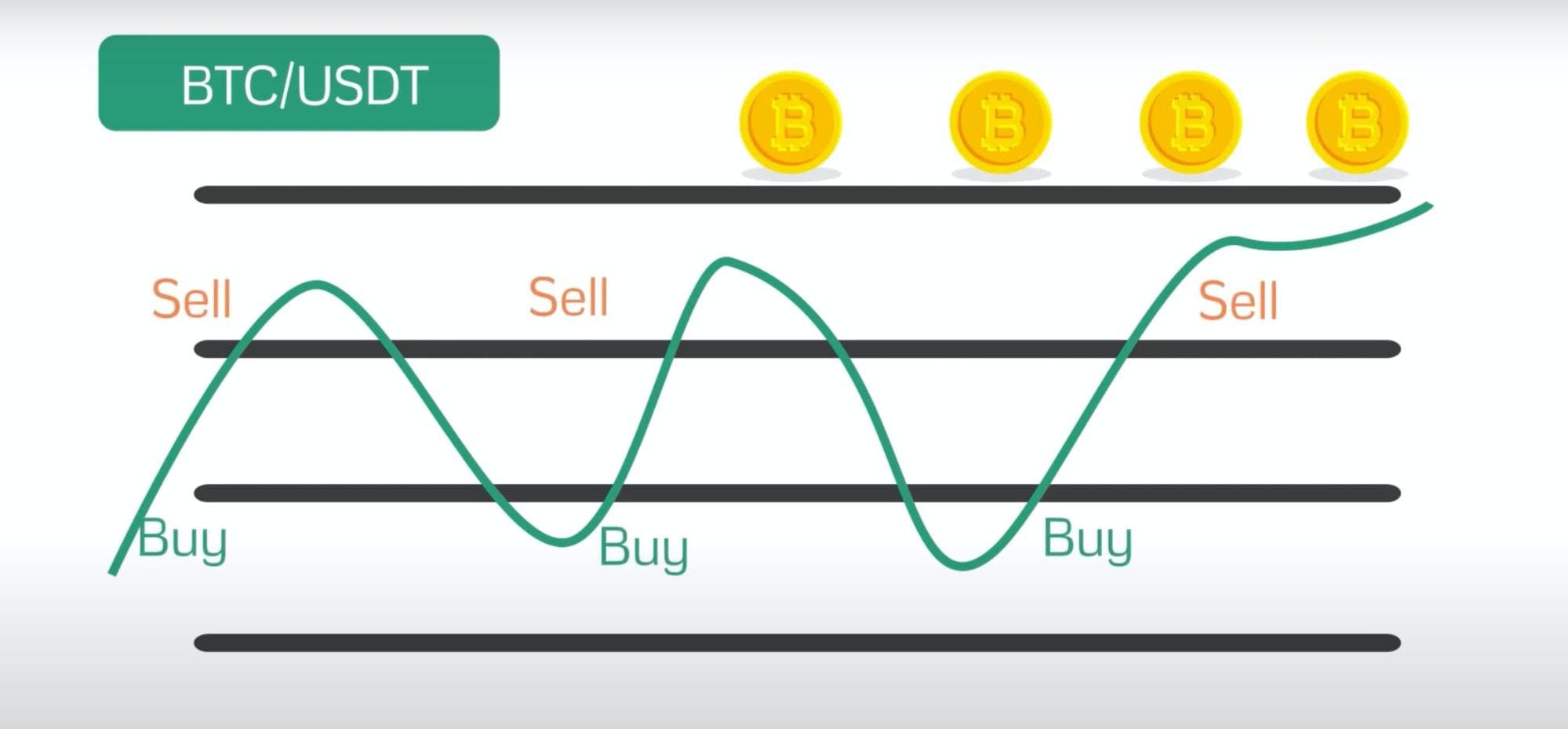Introduction
Welcome to the exciting world of forex trading! If you’re new to this financial market, you might have come across the term “pips” and wondered what it means. Pips play a crucial role in forex trading and understanding them is essential for anyone looking to enter this dynamic market.
Forex, short for foreign exchange, is the process of buying and selling currencies. It is the largest and most liquid financial market in the world, with trillions of dollars being traded daily. Unlike stock markets, forex operates 24 hours a day, five days a week, allowing traders from all around the globe to participate.
Now, let’s delve into the world of pips. The term “pip” stands for “percentage in point” or sometimes referred to as “price interest point.” A pip is the smallest unit used to measure the change in value of a currency pair. It represents the fourth decimal place in most currency pairs, except for a few yen-based pairs where it is the second decimal place.
Understanding the concept of pips is essential because they serve as the foundation for calculating profits and losses in forex trading. Every movement in the price of a currency pair is measured in pips, which allows traders to determine their potential gains or losses.
The calculation of pips varies depending on how many decimal places a currency pair is quoted. For instance, if the EUR/USD currency pair is quoted at 1.1234 and it increases to 1.1235, it means that the value of the pair has increased by one pip.
Pips are crucial in determining the profitability of a trade. A trader’s ultimate goal is to profit from the movement of currency pairs, and understanding pips helps them identify potential entry and exit points for trades. By analyzing pips, traders can assess the risk-reward ratio and make informed decisions.
There are various strategies traders employ to profit from pips. Some rely on short-term price fluctuations, executing multiple trades throughout the day, while others opt for long-term investments, holding positions for weeks or even months. Regardless of the chosen strategy, a trader’s success heavily relies on their ability to understand and interpret pips accurately.
Factors such as currency pair volatility, economic news releases, and market sentiment can influence pip values. As a trader, it’s important to stay updated with relevant market information and continuously analyze the factors that can impact pip values.
Now that you have a basic understanding of pips in forex trading, let’s explore different pip variations and how they can affect your trading decisions. By mastering the concept of pips, you’ll gain a deeper insight into the dynamics of the forex market and be better equipped to navigate the exciting world of currency trading.
What is Forex Trading?
Forex trading, also known as foreign exchange trading, is the buying and selling of currencies in the global marketplace. It is a decentralized market where participants trade one currency for another at an agreed-upon exchange rate. Forex trading is primarily conducted by financial institutions, corporations, governments, and individual investors.
Unlike the stock market, which operates through centralized exchanges, forex trading takes place over-the-counter (OTC), meaning that transactions occur directly between parties without a centralized clearinghouse. The forex market is open 24 hours a day, five days a week, allowing traders to access the market at any time, except on weekends.
The primary purpose of forex trading is to profit from fluctuations in currency exchange rates. Currencies are traded in pairs, such as EUR/USD (Euro/US Dollar) or GBP/JPY (British Pound/Japanese Yen). When trading forex, you buy one currency while simultaneously selling another. The goal is to anticipate whether the value of one currency will rise or fall in relation to the other currency in the pair.
One of the unique aspects of forex trading is leverage, which enables traders to control larger positions with relatively small amounts of capital. Leverage allows traders to amplify their potential profits, but it also increases the risk of losses. It’s important for traders to understand the risks involved and use leverage responsibly.
Forex trading offers a wide range of opportunities for traders. Some traders prefer to engage in day trading, executing multiple trades within a single day to profit from short-term price fluctuations. Others take a more long-term approach, focusing on fundamental analysis and holding positions for weeks or months.
The forex market is influenced by a variety of factors, including economic indicators, geopolitical events, central bank policies, and market sentiment. Traders use a combination of technical analysis, fundamental analysis, and market insights to make informed trading decisions.
In recent years, technological advancements have made forex trading more accessible to individual retail traders. Online trading platforms and mobile apps offer traders the ability to access real-time market data, execute trades, and manage their accounts from the convenience of their devices.
Despite the potential for profits, it’s important for aspiring forex traders to approach the market with caution and acquire the necessary knowledge and skills. Forex trading requires discipline, risk management strategies, and a solid trading plan. It’s advisable to start with a demo account to practice trading strategies and gain experience before risking real capital.
In summary, forex trading is a dynamic and potentially lucrative market where currencies are bought and sold. Traders aim to profit from fluctuations in exchange rates by speculating on the rise or fall of one currency relative to another. It’s a market open 24/5, offering various trading opportunities and requiring a combination of skills, analysis, and strategic decision-making.
Understanding Pips
Pips, short for “percentage in point” or “price interest point,” are a fundamental concept in forex trading. They represent the smallest incremental movement in the price of a currency pair. Understanding pips is crucial for accurately measuring changes in currency values and determining profits or losses.
Pips are typically measured as the fourth decimal place in most currency pairs, except for yen-based pairs, where they are the second decimal place. For example, if the EUR/USD currency pair moves from 1.1200 to 1.1201, it means the value of the pair has increased by one pip. Similarly, if the USD/JPY pair moves from 109.50 to 109.51, it has also increased by one pip.
It’s worth noting that not all movements in forex trading are measured in pips. In some cases, prices may move by fractional pips, commonly referred to as “pipettes.” A pipette represents a tenth of a pip and is denoted by an additional decimal place. For example, if the EUR/USD pair moves from 1.12000 to 1.12001, it has increased by one pipette.
Understanding the concept of pips is essential because they determine the profitability of a trade. When entering a trade, traders aim to profit from the movement in the exchange rate. For example, if a trader expects the EUR/USD pair to rise and buys it at 1.1200, they would look to sell it at a higher price, such as 1.1250, to make a profit. In this case, the trade has gained 50 pips.
Pips also play a crucial role in calculating profits and losses. The value of each pip depends on the position size of the trade and the currency pair being traded. By multiplying the pip value by the number of pips gained or lost, traders can determine their monetary gains or losses.
For most currency pairs, the value of a pip is calculated based on the size of the position in standard lots (100,000 units). However, traders can choose to trade in smaller sizes, known as mini lots (10,000 units) or micro lots (1,000 units), which would adjust the pip value accordingly.
It’s important for traders to be aware that pip values can fluctuate based on the currency pair’s volatility and the account currency. Currency pairs with higher volatility generally have larger pip values, indicating a greater potential for profit or loss.
In summary, pips are a fundamental concept in forex trading, representing the smallest incremental movement in the price of a currency pair. They are used to measure changes in currency values, calculate profits and losses, and determine trade profitability. By understanding and accurately analyzing pips, traders can make informed decisions and maximize their trading success.
How are Pips Calculated?
Calculating pips is essential for determining profits and losses in forex trading. The calculation depends on the decimal places used in the currency pair’s price quote. Let’s explore how pips are calculated in different scenarios.
In most currency pairs, pips are considered as the fourth decimal place. For example, if the EUR/USD currency pair is quoted at 1.1200 and it increases to 1.1201, it means that the value of the pair has increased by one pip. Similarly, if the pair decreases from 1.1200 to 1.1199, it has dropped by one pip.
However, certain currency pairs, such as those involving the Japanese Yen (JPY), are an exception. In JPY-based pairs, the second decimal place represents a pip. For instance, if the USD/JPY pair is quoted at 109.50 and it increases to 109.51, it means that the pair has increased by one pip.
Calculating pip value is also crucial for determining the potential profits and losses of a trade. The pip value depends on the position size of the trade and the currency pair being traded. To illustrate this, let’s consider a standard lot trade (100,000 units) in the EUR/USD pair.
If the pip value for the EUR/USD is $10, this means that for every one pip movement in the pair, the trade’s value will change by $10. So, if the trade gains 20 pips, the profit will be 20 pips x $10 = $200. Similarly, if the trade loses 30 pips, the loss will be 30 pips x $10 = $300.
For mini lots (10,000 units) and micro lots (1,000 units), the pip value is adjusted accordingly. In the case of mini lots, the pip value would be 1/10th of the standard lot value, and for micro lots, it would be 1/100th of the standard lot value.
It’s important to note that not all trading platforms display the pip values in the same way. Some platforms may show pip values in the account currency, while others may show them in the base currency of the pair. It’s crucial to understand how your chosen trading platform calculates and displays pip values to ensure accurate trade management.
Calculating pips accurately is vital for risk management and trade analysis. Traders can utilize pip values to determine their potential gains or losses compared to their account size and risk tolerance. By using stop-loss orders and calculating pip values, traders can set appropriate levels to limit potential losses and protect their capital.
In summary, calculating pips is an integral part of forex trading for determining price changes, evaluating trade profitability, and managing risk. The calculation differs depending on the decimal places used in the currency pair’s price quote. Understanding pip values and accurately calculating them empowers traders to make informed decisions and effectively manage their trades.
Importance of Pips in Forex Trading
Pips play a vital role in forex trading and hold significant importance for traders. Understanding and utilizing pips effectively can have a profound impact on trade analysis, risk management, and overall profitability. Let’s explore the importance of pips in forex trading.
1. Measurement of Price Movements: Pips provide a standardized way to measure the change in value of a currency pair. By quantifying price movements in pips, traders can accurately analyze the market and identify potential trading opportunities. It allows traders to objectively compare and evaluate the magnitude of price fluctuations across different currency pairs.
2. Determining Profits and Losses: Pips are essential for calculating profits and losses in forex trading. By knowing the value of each pip, traders can assess the potential gains or losses of a trade. This information is crucial for risk management and setting appropriate stop-loss and take-profit levels. Accurate pip calculations enable traders to make informed decisions to protect their capital and maximize profitability.
3. Strategy Development: Pips play a crucial role in developing trading strategies. By analyzing historical price movements in pips, traders can identify patterns, trends, and support/resistance levels. This information helps traders formulate entry and exit strategies, determine optimal trade sizes, and set realistic profit targets. Pips provide valuable insights for developing systematic and disciplined trading approaches.
4. Risk-Management: Effective risk management is a cornerstone of successful forex trading. Pips help traders determine their risk exposure by calculating the potential loss in monetary terms. By setting appropriate stop-loss orders based on pip values, traders can limit their downside risk and protect their trading capital. Understanding the relationship between pip values and position sizes allows traders to control their risk and maintain a healthy risk-to-reward ratio.
5. Trade Analysis: Pips enable traders to evaluate the performance of their trades effectively. By comparing the number of pips gained or lost to the account balance or equity, traders can measure their success and make adjustments to their trading strategies if needed. Pips serve as a valuable metric for tracking and analyzing trade performance over time.
6. Psychological Aspect: Pips have a psychological impact on traders. Seeing their trades move in pips can evoke various emotions and impact decision-making. Understanding the significance of pips helps traders maintain a balanced perspective, stay disciplined, and avoid making impulsive trading decisions based solely on short-term price fluctuations.
Accurate understanding and utilization of pips provide traders with critical insights into the forex market. By analyzing pips, traders can evaluate potential profit opportunities, manage risk effectively, and make informed trading decisions. Pips serve as a common language for traders globally, enabling them to communicate and understand price movements consistently.
How to Profit from Pips?
Profiting from pips is the ultimate goal for traders in the forex market. By understanding and effectively utilizing pips, traders can maximize their potential gains and minimize losses. Here are some strategies on how to profit from pips:
1. Identify Trends: Analyzing price movements and identifying trends is essential for profiting from pips. By utilizing technical analysis tools, such as trend lines, moving averages, or oscillators, traders can identify market trends and potential entry and exit points. The goal is to trade in the direction of the prevailing trend to capture larger price movements and accumulate more pips.
2. Set Realistic Profit Targets: Setting realistic profit targets based on pips is crucial. Traders should identify key support and resistance levels or take-profit targets using technical analysis. By calculating the potential number of pips a trade can capture and setting a profit target accordingly, traders can lock in profits before the market reverses.
3. Utilize Stop-Loss Orders: Risk management is paramount in forex trading. Placing stop-loss orders based on the calculated number of pips allows traders to limit potential losses. Stop-loss orders should be set at a level that aligns with the trader’s risk tolerance and trading strategy. By protecting capital and minimizing losses, traders can preserve their trading accounts and set the stage for long-term profitability.
4. Implement Risk-to-Reward Ratio: Assessing the risk-to-reward ratio is crucial for profitable trading. By calculating the potential reward in pips and comparing it to the potential risk, traders can determine if a trade is worth pursuing. A favorable risk-to-reward ratio involves aiming for higher potential rewards while keeping potential losses in check. Profitable traders focus on trades with a risk-to-reward ratio of at least 1:2 or higher.
5. Utilize Trailing Stops: Trailing stops allow traders to lock in profits as the trade moves in their favor. By adjusting the stop-loss order gradually to follow the price movement and protect profits, traders can secure pips even if the market reverses. Trailing stops provide a way to capture additional profits without having to time the exit point precisely.
6. Continuously Learn and Adapt: The forex market is dynamic, and successful traders are continuously learning and adapting to changing market conditions. It’s important to stay updated with market news, economic indicators, and emerging trends. Analyzing price action and reviewing past trades can help identify areas for improvement and refine trading strategies over time.
Remember, profitability in forex trading requires discipline, patience, and a systematic approach. It’s important to avoid impulsive decisions based on short-term price movements and focus on the bigger picture. By understanding the dynamics of pips and utilizing effective risk management strategies, traders can increase their chances of profiting from pips consistently.
Factors Influencing Pip Values
Pip values play a crucial role in determining the profitability and risk of forex trades. While pips are generally standardized, their values can vary depending on several factors. Understanding the factors influencing pip values is essential for accurate trade analysis and risk management. Here are some key factors to consider:
1. Currency Pair: The currency pair being traded is a significant factor in determining pip values. Different currency pairs have different pip value calculations due to variations in exchange rates and decimal places. As mentioned earlier, most currency pairs have pips calculated to the fourth decimal place, while yen-based pairs have pips calculated to the second decimal place.
2. Position Size: Pip values are directly influenced by the size of the trading position. The larger the position size, the greater the potential profit or loss per pip. Pip values are traditionally calculated for standard lot sizes (100,000 units). However, traders can adjust the position size using mini lots (10,000 units) or micro lots (1,000 units), which would proportionally affect the pip value.
3. Account Currency: The currency in which the trading account is denominated can also impact pip values. If the account currency is different from the base currency of the currency pair being traded, the pip value needs to be converted based on the prevailing exchange rate between the two currencies. This conversion ensures accurate calculations of profits and losses in the account’s currency.
4. Volatility: Currency pairs with higher volatility tend to have larger pip values, indicating larger potential profits or losses. Volatility is influenced by various factors, including economic news releases, geopolitical events, and market sentiment. Traders should consider the volatility of currency pairs when determining position size and setting stop-loss and take-profit levels.
5. Leverage: Leverage amplifies both potential profits and losses in forex trading. The use of leverage allows traders to control larger positions with smaller amounts of capital. While leverage does not directly affect pip values, it indirectly impacts the overall profitability and risk exposure of trades. Higher leverage magnifies the effect of pip movements, increasing both potential gains and losses.
6. Decimal Places: Different brokers and trading platforms may quote currency pairs with different decimal places. It is essential to be aware of how a specific platform displays prices to avoid miscalculating pip values. Some platforms might display prices with fractional pips or pipettes, representing price movements smaller than one pip.
By considering these factors, traders can accurately calculate pip values and assess the potential profits and risks associated with forex trades. It is crucial to regularly monitor these factors as they can change over time, influencing the pip values and overall trading strategy.
Traders should always use proper risk management techniques, such as setting appropriate stop-loss orders and position sizes, to control risk exposure. By understanding and accounting for the factors that influence pip values, traders can make informed decisions and fine-tune their trading strategies for long-term profitability.
Different Pip Variations
Pips are a standardized unit for measuring price movements in forex trading, but there are variations in how they are quoted and calculated. These variations can impact the precision and interpretation of pip measurements. Let’s explore different pip variations and their significance:
1. Standard Pips: Standard pips refer to the conventional measurement of price movements in most currency pairs. In these pairs, pips are typically represented by the fourth decimal place, except for yen-based pairs, where pips are expressed by the second decimal place. For example, if the EUR/USD pair moves from 1.1200 to 1.1201, it represents a one-pip movement.
2. Fractional Pips: Some trading platforms and brokers provide fractional pips, also known as pipettes, to represent smaller price movements. Pipettes allow for more precise measurements and evaluations of price changes. For instance, instead of a one-pip movement, a fractional pip could represent a movement of 0.1 pips. Therefore, a movement from 1.12000 to 1.12001 would be considered a one-pipette movement.
3. Pipettes in JPY Pairs: Yen-based currency pairs, such as USD/JPY or EUR/JPY, are often quoted differently due to the relatively lower exchange rates of the yen. In these pairs, pipettes are used to represent the second decimal place. For instance, if the USD/JPY pair moves from 109.50 to 109.51, it represents a one-pipette movement.
4. Percentage Pips: Percentage pips, also known as pip value percentages, can be used to measure price changes in terms of percentage rather than absolute units. Percentage pips provide a useful comparison when analyzing the performance of different currency pairs or trading instruments. For example, if two currency pairs both move by 50 pips, but one currency pair has a higher value, the percentage pips would show the relative change between the two pairs.
5. Pips in Cross Currency Pairs: Cross currency pairs, also known as minor pairs or exotics, involve two currencies that do not contain the US dollar. The pip calculation in these pairs is similar to standard pips, but the currency pair may not have the same level of liquidity or trading volume as major pairs. Traders should consider these factors when analyzing and trading cross currency pairs.
It’s crucial for traders to be aware of these pip variations, as they can impact trade execution, risk management, and overall profitability. Understanding the specific pip variations used by the trading platform or broker is vital for accurate calculations, profit estimations, and trade analysis.
Additionally, traders should consider the pip variation used when selecting trading strategies and analyzing historical data. By adjusting calculations and interpretations according to the specific pip variation, traders can ensure the accuracy and relevance of their analysis in different currency pairs and market conditions.
In summary, different pip variations exist in forex trading, including standard pips, fractional pips (pipettes), pipettes in JPY pairs, percentage pips, and pips in cross currency pairs. Each variation represents a different level of precision in measuring price movements and requires specific considerations for accurate analysis and trade execution. Understanding and adapting to pip variations is crucial for successful trading in diverse currency pairs.
Conclusion
Pips are a fundamental concept in forex trading, serving as a measurement unit for price movements. They play a vital role in determining profits and losses, analyzing trade performance, and managing risk. Understanding pips allows traders to make informed decisions, set realistic profit targets, and employ effective risk management strategies.
In this article, we explored various aspects of pips in forex trading. We discussed how pips are calculated, their significance in analyzing price movements, and the factors influencing pip values. We also delved into different pip variations and their implications for trade analysis.
Forex trading is an ever-evolving and dynamic market, and the accuracy of pip calculations is essential for successful trading. By accurately understanding and utilizing pips, traders can assess trade profitability, identify entry and exit points, and manage risk effectively.
It’s important for traders to continually update their knowledge and adapt to changes in the market. Regularly reviewing and analyzing trade performances, experimenting with different strategies, and staying informed about economic events and market trends contribute to long-term success in forex trading.
Remember, while pips are essential, they are just one aspect of successful trading. Developing a comprehensive trading plan, employing sound risk management techniques, and continually educating oneself are vital for consistent profitability in the forex market.
By mastering the concept of pips and integrating them into a strategic approach, traders gain a deeper understanding of market dynamics and increase their chances of achieving their trading goals. Embrace the power of pips and embark on your forex trading journey with confidence!







